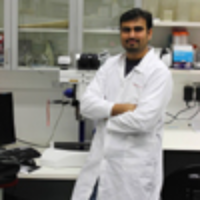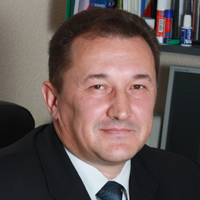Postural Stability Induced by Supervised Physical Training may improve also Oxygen Cost of Exercise and Walking Capacity in Post-Menopause, Obese Women
Published on: 9th January, 2017
OCLC Number/Unique Identifier: 7281040222
We utilized the training impulses method to numerically quantify the volume of physical exercise to be prescribed to postmenopausal obese women in such a way of obtain the best possible improvement of their health-related quality of life. Nine women (57±4 years, 89±2 kg, 157±9 cm) carried out 3-months of exercise training (3 session/week each lasting 80 min) under the supervision of skilled operators which indirectly calculated the volume of physical exercise by assessing heart rate values while patient exercised and making sure that the workload corresponded to 50-60% of their maximum oxygen uptake. Before and after training anthropometric, functional and biomechanical variables were assessed. After training patients shoved statistically signifi cant (P<0.05) reduction in body mass (-2%) and body mass index (-4%), waist circumference (-4%), total (-6%) and LDL (-26%) serum cholesterol and glycaemia (-8%), diastolic arterial blood pressure (-14%), and oxygen cost (-14%) at the maximum workload during incremental cardiopulmonary test, the sway area from unipedal stance (right leg) of 20 s on a pressure platform (-49%), while increased both free fat body mass percentage (+3%) and space covered during the six minute walk test (+11%). It was concluded that, when an exercise protocol is carried out by postmenopausal obese women and the volume of exercise is instrumentally controlled by experienced operators, it could result in an effective benefi t on the quality of life of these patients since they ameliorate some critical anthropometric and functional parameters.
Meigs syndrome: About an uncommon case report
Published on: 6th January, 2023
Background: Ovarian fibroma is a very unusual epithelial tumor representing less than 1% of all ovarian tumors. It can be asymptomatic and discovered during surgery or be associated with a pleural effusion preferentially located on the right side and a more or less abundant free ascites in the framework of the so-called Meigs syndrome. The challenge of management then lies in distinguishing benign from malignant since clinically, radiologically, and biologically everything points towards malignant which requires radical surgical treatment. We report here the case of a 69-year-old postmenopausal patient with a clinical form of Meigs' syndrome that strongly suggested ovarian cancer.Case presentation: We hereby report here the case of a 69-year-old patient, menopausal, gravida 4 para 3 with 3 live children delivered vaginally and one miscarriage. She presented with ascites, hydrothorax, and a solid tumor of the ovary. Serum CA 125 and HE 4 levels were very high. ROMA score was highly suggestive of malignancy. A hysterectomy with adnexectomy was performed. It was only the histological evidence of ovarian fibroma and the rapid resolution of its effusions that confirmed Meigs syndrome.Conclusion: Meigs syndrome is an anatomical-clinical entity that associates a benign tumor of the ovary, ascites, and hydrothorax. Highly elevated CA 125 and HE-4 tumor markers often point clinicians toward a malignant tumor and compel radical surgical treatment. This case report reminds us once again that only histology confirms the diagnosis of cancer.
Types and Outcomes of Diagnostic Measures provided for women Presented with Postmenopausal Bleeding
Published on: 21st April, 2025
Background: Postmenopausal bleeding (PMB) is bleeding from the genital tract after 12 months of amenorrhea in a woman over the age of 50, or 24 months if below the age of 50 years, in 10% of women presented with PMB, the cause is endometrial cancer.Purpose: To assess the clinical presentation types and outcomes of diagnostic measures provided for women presenting with PMB at Saad Abu-Alela Hospital, Khartoum, Sudan.Methodology: It was a descriptive, cross-sectional study conducted at Saad Abu-Alela Teaching Hospital in the period from January to December 2022.An interview questionnaire was used for data collection. Fifty-nine (59) postmenopausal women were included in this study, age, parity, risk factors, duration of bleeding, duration of menopause, ultrasound findings, and hysteroscopy findings were recorded.Results: The majority of study participants were aged between 50-54 years, menopause duration was most 1-4 years, most of the participants were educated and medically free, DM and HTN, and most of the participants were multiparous. Duration of PMB ranged between weeks in a third of cases and up to more than a year in some cases, amount of bleeding was mild in more than half. Ultrasound is used to assess the endometrial thickness and other findings, also hysteroscopy and biopsy or Dilation and curettage and hysterectomy.Conclusion: The ultrasound and endometrial biopsy via inpatient hysteroscopy and dilatation and curettage were the best tools for evaluation of (PMB), benign conditions were the most frequent outcome and endometrial cancer.




